These days, everything seems to be getting “Smart” or using A.I. as a “Game Changer.” While it’s certainly become a nuisance on the internet, you also see it in our everyday lives in the rise of smart home technology, new-age security systems, and comfort that gives you the illusion of control.
On paper, they make sense. A smart thermostat can save you money. An A.I.-organized security system should catch things human eyes miss. Remote control features synced to your phone let you close the curtains and check to see if there’s milk in the fridge without getting off the couch.
Yet, I can’t help but wonder what happens when the grid goes down, the internet crashes, or those glitchy apps that control everything malfunction. Could it come to pass that the very systems designed to protect you and insulate you with comfort turn on you at the worst possible time?
As someone who has gone toe-to-toe with the faultiness of modern-day digital reality, I thought I’d take a closer look at the potential disadvantages and dangers that could come if your so-called “Smart Devices” start doing some dumb things.
False Sense of Security
Most people buy into smart technology to simplify life and bolster security. Cameras notify your phone of intruders. Smart locks let you monitor who enters. Smart thermostats learn your habits and adjust the temperature to conserve energy.
All these things run on algorithms, networks, and often-glitchy apps designed by third parties you don’t control. While you have some influence over the temperature of your home and you can usually tell the door to lock and unlock when you want, your control isn’t absolute. If something goes wrong with the app or algorithm that controls those systems or the power goes down, you could literally be left out in the cold.
Your Devices Report Back
 Even if the world never goes sideways, your smart devices can betray you through constant surveillance. These days, data has massive value, and while data privacy laws exist, they are hazy, full of loopholes, and unenforceable.
Even if the world never goes sideways, your smart devices can betray you through constant surveillance. These days, data has massive value, and while data privacy laws exist, they are hazy, full of loopholes, and unenforceable.
Many smart devices aren’t just listening to you. They’re reporting back to the corporations, networks, and servers that support them. Amazon Alexa, Google Nest, Ring cameras, and dozens of other devices collect data about your voice, routines, preferences, and even your guests.
Companies collect this information under the guise of improving their service or marketing it more effectively. Their systems build sophisticated algorithms around your choices. In some cases, they even decide what information you get to see.
They store everything—what you’ve purchased, what’s in your pantry, what’s sitting in your smart fridge’s freezer, and a ton of other data about your lifestyle—on some remote server. But how secure is that server? Has anyone hacked it before? Does it hold your bank account info too?
The Danger of Dependency
Smart devices are designed to make your life more comfortable. Yet they also buffer from the little details of reality. The ability to think with razor sharp clarity in the moment, being aware of your circumstances, and general physical fitness are things that need to be trained and kept in peak condition.
When everything is available at the touch of a button, you lose some of that. Then, when the world does go wrong, you’ll find yourself out of shape and unaccustomed to the feeling of handling life’s little details for yourself.
When you rely on voice assistants to turn on lights or thermostats to manage your heat, you’re ceding control. You may think you’re saving time or making things easier, but you’re also forgetting how to manage your home manually.
For instance, if your smart thermostat went dead and it locked the thermocouple on your furnace, would you know how to manually bypass it? Could you turn on your home heating system and activate the blower motor manually? What if that happened during a winter ice storm?
>> Shield Your Home Against an EMP with the Same Technology the US Military Uses to Protect Their Bases
The Kill Switch Risk
In certain scenarios, smart systems can be disabled in a way that can be used against you. The network that your smart devices are connected to also gives them the power to deactivate your services remotely.
Let’s say your bank account gets hacked, and your bank locks it down, or you fall on hard times and miss a few payments. The corporations running your smart devices have loopholes that allow them to deactivate service when they see fit.
On the face of it, that sort of makes sense. You owe them money, and you can’t use their services until you pay up. Let’s hope they choose to disengage remote access to your locks and thermostat while you’re at home, and not away.
What if you made those payments in good faith, but hackers got into the network servers that connect your smart controls? Can they use some non-payment service lock-out features as a digital kill switch? Can they even unlock your doors to let the wrong people in, or let you freeze to get you to comply with their demands?
A.I. Integration Invites Unpredictability
New smart devices are increasingly driven by artificial intelligence. These systems make “decisions” based on patterns, risk assessments, and voice commands. Unfortunately, software developers rush their AI development to be the first to market, often leading to “A.I. Hallucinations.”
It’s an increasingly common thing that’s caused voice assistants to accidentally call emergency services, record private conversations, or even act on ambient noise.
In high-stress events like home invasions, civil unrest at your door, or natural disasters, a smart home A.I., for example, could become an unpredictable liability. Imagine if it started turning lights on when you need them off or deactivating your security system rather than hardening it.
There’s even talk about future systems that may include automatic lockdown protocols that you cannot override without cloud verification.
Practical Prepper Alternatives
Now I’m not saying you have to go back to living like it’s 1957, when most people left their doors unlocked. I want to point out that there are low-tech, effective options for security, comfort, and control without the potential vulnerability of smart home systems. This includes things like:
- Motion lights
- Mechanical locks and battery-powered alarms that don’t require Wi-Fi.
- Manual thermostats and portable emergency heaters.
- Solar lanterns, rechargeable LEDs, and 12-Volt DC lighting systems.
- Mechanical timers for irrigation, lighting, and heating.
- Closed-circuit TV systems that record locally without an internet connection.
These systems may require more involvement than so-called smart home devices, but they put you in control.
What About Your Other Smart Devices?
Smart thermostats and locks might be the obvious concerns, but don’t forget the tech that lives on you. Your smartphone, tablet, laptop, and even that fancy smartwatch on your wrist could become some of the biggest threats to your privacy, security, and survival when things go sideways.
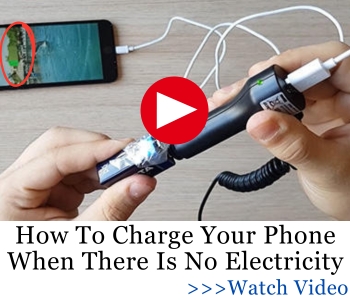 Most folks treat their phone like an essential. It’s their flashlight, weather report, compass, map, contact list, and even their bank. But every single one of those features depends on power and a stable network.
Most folks treat their phone like an essential. It’s their flashlight, weather report, compass, map, contact list, and even their bank. But every single one of those features depends on power and a stable network.
Once the grid goes down or the towers stop talking, these devices turn into dead weight. Also, if you stored all your prepper documents, maps, comms plans, or passwords in the cloud, you lose them. Just like that.
These devices constantly watch you—and constantly report back. Smartphones track your location even when they’re “off.” Smartwatches log your heart rate, sleep patterns, and daily movements.
Hackers can easily target laptops and tablets connected to the cloud. They can scan, hijack, or remotely lock them down. And don’t kid yourself: if someone wants to find you, monitor you, or exploit your routines, these devices make it laughably easy.
Think about it—if your phone’s facial recognition doesn’t work without power or network access, how will you even get in to retrieve your data in a blackout or bug-out? If your laptop locks up after an automatic update, how fast could you recover?
So Here’s What You Should Do
- Back up everything offline.
- Use this very affordable and highly efficient (98% military-grade protection) EMP Cloth to protect the essential stuff in case of an EMP attack.
- Keep maps, passwords, and critical documents on paper.
- Store emergency comms on flash drives or encrypted SD cards.
- Have a way to charge your gear that doesn’t require the grid—solar, crank, or 12-volt.
Right now, you’ve got the internet at your fingertips. You can look up how to fix a generator or bypass a smart thermostat. But when the grid goes down, so does Google. Your phone, laptop, and cloud storage will become useless. That’s why you need this knowledge in physical form—something no blackout, EMP, or glitchy app can erase.
All the crucial know-how for cutting ties with Big Tech and surviving without smart systems is packed inside A Navy SEAL’s Bug-In Guide. Inside, you’ll discover:
- How to become completely untraceable when SHTF
- How to stay off the government’s radar when things go hot
- An ingenious way to stop your phone from tracking you
This isn’t theory—it’s hard-earned experience from someone who’s trained to survive when all systems fail. Don’t wait until it’s too late to figure out what you should have known.
➡️ Get the skills now—in print, where they can’t be wiped, hacked, or shut down.
On top of that, I strongly recommend focusing on creating a secure environment to store all critical information and survival items for the post-SHTF world.
The Easy Cellar shows you how to build a near-indestructible underground bunker on a tight budget — under $400. I’m talking about a safe place to keep books, legal documents, maps, and other high-value items that could save your life after disaster strikes.
It’s also the perfect place to store food and water supplies. I urge you to take these matters seriously and invest in long-lasting food stockpiles and renewable water sources that don’t rely on the public grid. This DIY backpack-sized water generator, can literally save your life, producing at least 10 gallons of clean water per day, out of thin air.
If you want a reliable water source for the long haul, you should take a look at a solution known as The Water Freedom System. It’s already in use by military units in countries such as the U.S., Israel, India, and the UK. This system could make a real difference in your preparedness strategy. You can explore it in more detail here.
Final Thoughts
A smart home might seem to make life easier when the grid’s up and running. Yet in a true crisis, it could turn against you. From data leaks to power loss, remote shutdowns, and the potential A.I. overreach, the current iterations come with more vulnerability than advertised.
Don’t trade real control for convenience until they build an override feature that works without a glitchy phone app. Know your tools, control your systems, and never forget that the smartest home is one that listens to you over someone else’s algorithm.
The Amish have lived off-grid in America for over 200 years. No electricity and internet. Basically, no reliance on modern tech. They’ve mastered true self-reliance. The Amish Ways Book reveals the time-tested skills and mindset that keep them thriving. Learn from their way of life! There are only a few copies left!
You may also like:
8+ Devices That Will Survive An EMP
This Book Can Help You Live in a World Without Electricity (Video)
28 Underrated Prepping Items That Could Save Your Life

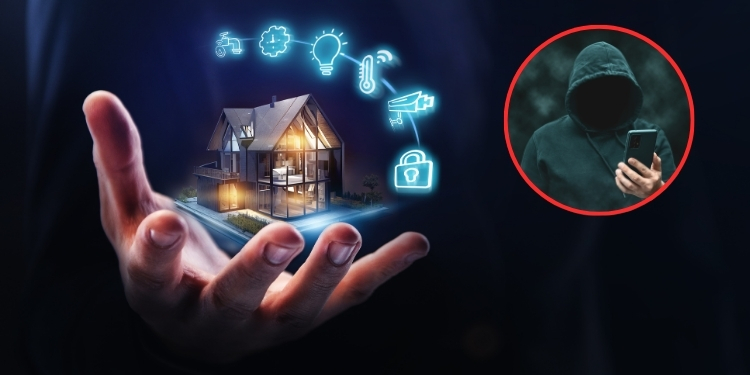

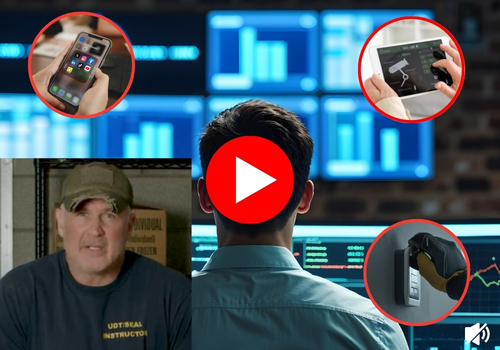













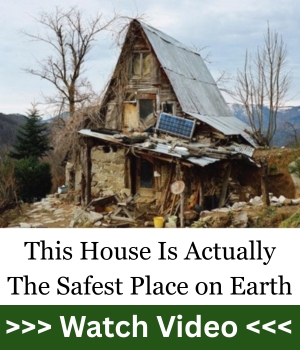

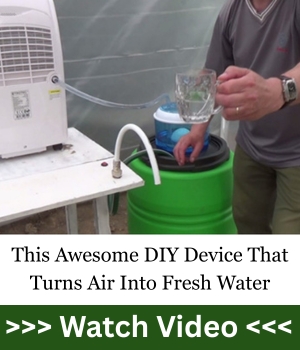





When Arizona offered digital wifi thermostats for free to customers purchasing their power from APS … I quickly figured out what was going on. In the same manner that there are no water meter checkers, or power meter checkers … all which can and are being checked by someone sitting behind a keyboard in some air conditioned office … the wifi thermostats offered for free, suggested the same thing. Sure enough, now that many people realized what they are doing, now they admit it, still offering the thermostats for free, acknowledging they can control the temp at which you keep your house remotely, touting all the advantages … they can reduce your bill, when the grid is being used most, saving you money …. yeah right.
You’re absolutely right to be suspicious. Anything labeled “free” usually comes with strings attached, especially when it’s connected to your power supply.
Those thermostats may offer convenience, but they also open the door to remote control over your home’s climate, whether you agree with it or not. It’s all about centralized control disguised as energy efficiency.
Preppers should always think twice before handing over autonomy for a supposed “discount.”
I have worked in data systems for large companies for the past 3 decades and been involved in both long term storage and data recovery scenarios. SD cards or flash drives should not be relied on for critical data since the data will decay over time. In about a year of non use, the data stored will slow lose it’s integrity. Most electronic storage medium have limited storage shelve live when not in use. Paper, preferably acid free paper, properly stored is much better for seldom used critical data storage.
That’s solid insight, and it’s something many folks overlook. Just because it’s digital doesn’t mean it’s permanent.
Long-term data survival requires low-tech, low-risk methods. Acid-free paper, microfilm, even etched metal plates might outlast any flash drive in an EMP or SHTF scenario.
*SMART* Is an acronym for
Self Monitoring And Reporting Technology
Hell yes your being spied on, & your paying for it…
Yep…From your fridge to your thermostat to your phone, if it’s smart, it’s probably smarter than it should be.
I have a highly sophisticated smart device implanted in my chest that keeps me alive. Plus I have a wifi monitor my pacemaker is always talking to, and every six months I see my Electrophysiologist who downloads the moment by moment record of physical activity recorded and saved by my pacemaker. It is said the techs can tell everything you do from that accumulated info. Wow, kinda scary to think what my smart clothes dryer also knows.
That is a double-edged sword, and you said it best: life-saving tech that quietly tracks more than we realize. Preppers often get mocked for going “low-tech,” but there’s a reason many of us still favor analog tools.
The smart thermostat we have will automatically change to a higher temperature when the power company has a energy shortage in the summer. I am sure they would take control of the government ordered it.
You’re absolutely right and it’s already happening in places like Texas and California. What’s marketed as “smart energy efficiency” is, in practice, remote control over your home.
Let’s not forget when Denver had a hot spell a couple of years ago. Summer was over but a few hot days hit and when everyone went to cool off the smart thermostats prevented them. It caused an uproar but I bet nothing was done to fix it.